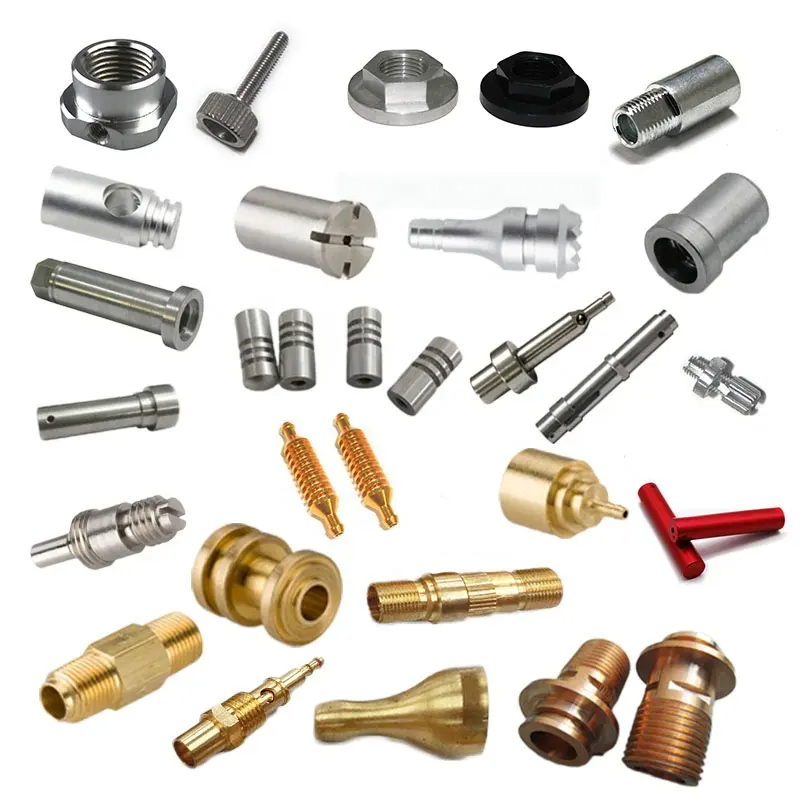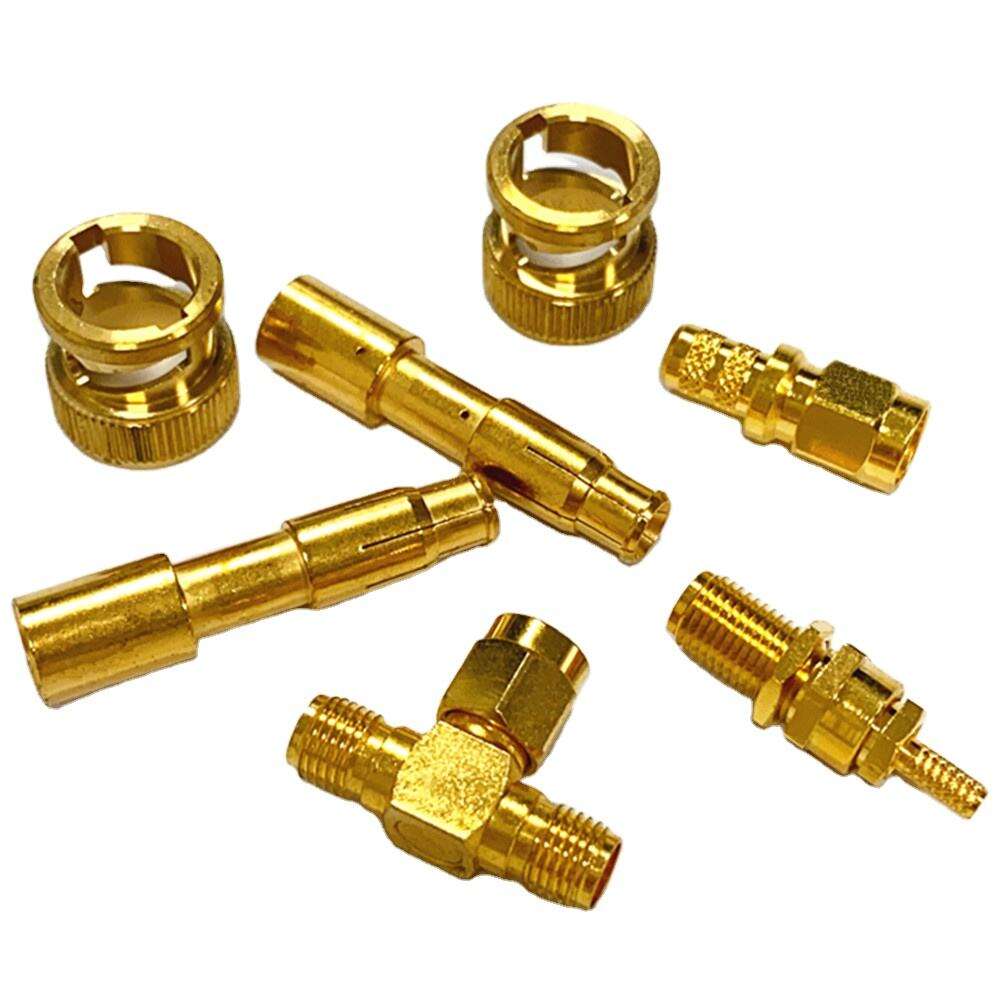Understanding the Galvanizing Process for CNC Parts
In modern manufacturing, durability and resistance to environmental factors are just as important as precision and performance. CNC machining has revolutionized industries by providing components with exceptional accuracy, but many applications also demand protection against corrosion, moisture, and mechanical wear. One of the most widely used finishing techniques that adds this protective layer is galvanizing. By applying a zinc coating to the surface of CNC Parts, galvanizing provides long-lasting resistance against corrosion while extending the service life of components used in harsh conditions. Understanding the galvanizing process, its variations, and its benefits is crucial for engineers, manufacturers, and end users who want to maximize the performance and longevity of CNC Parts.
The Importance of Surface Finishing for CNC Parts
CNC Parts are produced to precise specifications, often with tight tolerances and intricate geometries. While the machining process ensures accuracy, the raw material surface may still be vulnerable to corrosion, especially if it is steel or iron. Without surface protection, exposure to humidity, water, or chemicals can cause rust, oxidation, or structural degradation. For industries like construction, automotive, and heavy machinery, where CNC Parts must withstand demanding environments, finishing treatments such as galvanizing are essential.
Surface finishing is not only about protection; it also improves aesthetics, surface smoothness, and sometimes even functionality. Galvanizing stands out among finishing techniques because it combines cost-effectiveness with robust, long-term corrosion resistance. Compared with painting or simple plating, galvanized coatings are more durable and require less maintenance over time.
What Is the Galvanizing Process?
Galvanizing is the process of applying a protective zinc coating to steel or iron components to prevent corrosion. The zinc serves as a sacrificial layer that corrodes in place of the base material, ensuring that the CNC Parts beneath remain intact. Even if the coating is scratched or damaged, zinc provides cathodic protection, meaning it continues to protect exposed steel areas from rusting.
This process has been widely adopted across industries because it is relatively affordable and provides excellent protection compared with many other finishing methods. The choice of galvanizing method depends on the type of CNC Parts, the required durability, and the environment in which the components will be used.
Types of Galvanizing for CNC Parts
Hot-Dip Galvanizing
Hot-dip galvanizing is the most common and widely recognized method. CNC Parts are immersed in a bath of molten zinc, usually heated to around 450°C. The high temperature allows zinc to metallurgically bond with the steel surface, forming several layers of zinc-iron alloy beneath a top layer of pure zinc. This results in a thick, durable coating that provides outstanding corrosion resistance. Hot-dip galvanizing is especially suitable for CNC Parts used in construction, outdoor equipment, and heavy machinery where long-term durability is critical.
Electro-Galvanizing
Electro-galvanizing involves using an electric current to deposit a thin layer of zinc onto the surface of CNC Parts. Unlike hot-dip galvanizing, this method produces a more uniform and smoother finish with greater control over coating thickness. Electro-galvanized parts have better aesthetics and are often used in applications where appearance matters, such as automotive body panels or consumer goods. However, the coating is thinner compared with hot-dip galvanizing, meaning electro-galvanized parts may not last as long in extreme conditions.
Mechanical Galvanizing
Mechanical galvanizing uses a tumbling process in which CNC Parts are mixed with zinc powder, glass beads, and other materials in a rotating drum. The friction causes zinc particles to bond mechanically with the part’s surface. This method is often used for fasteners and small parts that cannot withstand the high temperatures of hot-dip galvanizing. Mechanical galvanizing produces coatings with good corrosion resistance, though typically not as strong as hot-dip coatings.
Thermal Spray Galvanizing
In this process, molten zinc is sprayed onto the surface of CNC Parts using a flame or electric arc. The sprayed zinc solidifies and adheres to the base material, forming a protective coating. Thermal spray galvanizing allows for thicker coatings and is ideal for large structures or repairs. It provides solid protection but requires sealing for maximum performance.

Advantages of Galvanizing CNC Parts
Galvanizing provides a combination of durability, protection, and cost-effectiveness that is difficult to match with other finishing techniques. One of its most important advantages is long-term corrosion resistance. Zinc coatings can protect CNC Parts for decades, even in outdoor or industrial environments.
Another advantage is low maintenance. Once applied, galvanized coatings require little or no upkeep compared with painted or coated alternatives, which often need reapplication or repair over time. This translates into lower lifecycle costs for industries using CNC Parts in demanding applications.
Galvanizing also offers robust mechanical protection. The coating resists abrasion and protects against minor impacts, further extending the part’s service life. Additionally, galvanizing provides full coverage, including edges, corners, and hard-to-reach areas that might be vulnerable if other finishing methods are used.
From an environmental standpoint, galvanizing is sustainable. Zinc is a natural material, and galvanized parts have a long service life, which reduces the frequency of replacements. Recycling is also possible at the end of the part’s life, further supporting environmental responsibility.
Applications of Galvanized CNC Parts
Galvanized CNC Parts are used in numerous industries because of their durability and versatility. In construction, they are essential for structural components, fasteners, brackets, and supports exposed to outdoor conditions. In automotive, galvanizing protects body panels, frames, and small mechanical parts from rust. The energy sector also relies on galvanized parts for infrastructure such as transmission towers, pipelines, and renewable energy equipment.
In agriculture, galvanizing ensures that CNC Parts used in irrigation systems, equipment, and fencing can withstand exposure to moisture and chemicals. Even in consumer products such as furniture, appliances, and electronics, galvanizing plays a role in improving appearance and longevity.
Limitations of Galvanizing
Despite its many benefits, galvanizing has limitations. Hot-dip galvanizing can sometimes cause dimensional changes because of the thickness of the coating, which may not be suitable for precision CNC Parts requiring very tight tolerances. Electro-galvanizing, while offering a smooth finish, provides thinner protection that may not last as long in harsh environments. Mechanical galvanizing is limited in terms of coating thickness and is not ideal for large parts. Additionally, galvanizing may alter the surface appearance, which could be undesirable in applications requiring specific aesthetics.
Best Practices for Galvanizing CNC Parts
To maximize the benefits of galvanizing, CNC Parts must be prepared properly before coating. This includes cleaning processes such as degreasing, pickling, and fluxing to ensure that the zinc adheres well to the metal surface. Design considerations are also important. Engineers must account for coating thickness when specifying tolerances and ensure that parts are designed to allow drainage during galvanizing, especially in hot-dip methods.
Choosing the appropriate galvanizing method depends on factors such as the operating environment, the required service life, budget constraints, and the size and geometry of the parts. Collaborating with experienced finishing providers ensures that CNC Parts receive the right protection while maintaining their precision and performance.
Conclusion
Galvanizing is one of the most effective finishing methods for protecting CNC Parts from corrosion and extending their service life. With different techniques such as hot-dip galvanizing, electro-galvanizing, mechanical galvanizing, and thermal spray, manufacturers can choose the most suitable option based on application requirements. The advantages of galvanizing include long-term corrosion resistance, low maintenance, mechanical durability, and environmental sustainability. While it does have limitations in terms of tolerance impact and aesthetic considerations, these can be managed with proper planning and design. For industries that depend on CNC Parts to perform reliably under challenging conditions, galvanizing remains an indispensable finishing process.
FAQ
What is galvanizing in CNC Parts?
It is the process of applying a zinc coating to CNC Parts to protect them from corrosion and environmental damage.
Which galvanizing method is best for CNC Parts?
Hot-dip galvanizing offers the strongest protection, while electro-galvanizing provides a smoother finish. The choice depends on the application.
Do galvanized CNC Parts need maintenance?
Generally, no. Galvanized coatings provide long-term protection with little to no maintenance required.
How long does galvanizing protect CNC Parts?
Depending on the method and environment, galvanized CNC Parts can last for several decades without significant corrosion.
Can galvanizing affect the dimensions of CNC Parts?
Yes, especially with hot-dip galvanizing, where coating thickness may alter precise tolerances.
Is galvanizing environmentally friendly?
Yes, zinc is recyclable, and the long lifespan of galvanized parts reduces material waste over time.
Can small CNC Parts be galvanized?
Yes, small parts can be treated using methods like electro-galvanizing or mechanical galvanizing.
Does galvanizing improve the appearance of CNC Parts?
Electro-galvanizing produces a smooth, uniform finish, which improves aesthetics, while hot-dip galvanizing has a more rugged look.
Are galvanized CNC Parts suitable for outdoor use?
Yes, galvanizing provides excellent protection against moisture and outdoor environmental conditions.
What industries use galvanized CNC Parts most?
Construction, automotive, agriculture, energy, and consumer products industries frequently rely on galvanized CNC Parts.
Table of Contents
- Understanding the Galvanizing Process for CNC Parts
- The Importance of Surface Finishing for CNC Parts
- What Is the Galvanizing Process?
- Types of Galvanizing for CNC Parts
- Advantages of Galvanizing CNC Parts
- Applications of Galvanized CNC Parts
- Limitations of Galvanizing
- Best Practices for Galvanizing CNC Parts
- Conclusion
-
FAQ
- What is galvanizing in CNC Parts?
- Which galvanizing method is best for CNC Parts?
- Do galvanized CNC Parts need maintenance?
- How long does galvanizing protect CNC Parts?
- Can galvanizing affect the dimensions of CNC Parts?
- Is galvanizing environmentally friendly?
- Can small CNC Parts be galvanized?
- Does galvanizing improve the appearance of CNC Parts?
- Are galvanized CNC Parts suitable for outdoor use?
- What industries use galvanized CNC Parts most?

